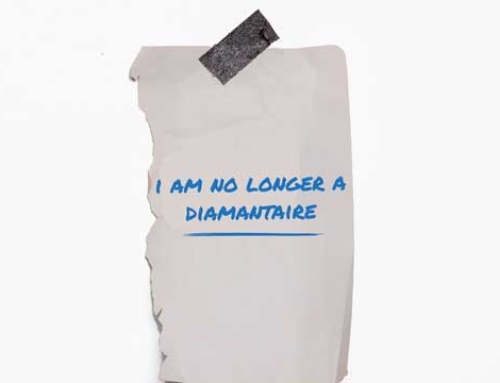Dishwashing diamonds – Image: Megan Thorne Collection
There’s a new trend in engagement rings: dishwashing diamonds.
Dishwashing diamonds? Read along.
By 2022, some 2.47 million weddings will take place, according to the research group The Wedding Report. And so begins the latest trend in engagement rings: wash-up diamonds.
Brown, gray, champagne or salt-and-pepper colored stones – shades of wet. The stones are becoming popular for a handful of reasons. They are priced more accessibly, meaning couples can opt for a higher carat weight.
Major jewelers specializing in bridal jewelry, such as Brilliant Earth and Blue Nile, are seeing growing interest in these so-called dishwashing diamonds. While simple diamond solitaire rings with a white diamond as the centerpiece will always be the staple of the engagement trade, “there is increasing demand for brown and gray diamonds; these are part of the fancy color category, as is a pink or yellow stone.”
“This dishwashing diamonds trend is definitely part of a broader trend in diamonds and diamond jewelry to be more individualistic and innovative.”
Young couples can get a rather large stone or unique shape that they would not normally be able to afford in the same size and shape in a very white stone, for a similar budget.
These dishwashing diamonds are not only a trend, they are increasingly in demand. Brides magazine has also commented on the subject.
Designers and dishwashing diamonds
Designers are embracing the more natural diamonds with great enthusiasm. Once you see them you might just fall for them yourself. Fort Worth-based jewelry designer Megan Thorne is already all in. She has designed a selection of dazzling salt and pepper engagement rings, with more models to come.
“I’m glad these stones are getting more attention,” Thorne says. “In the past, these stones were ground up and used for industrial applications. But they are now more sought after.”
“In a few marketing campaigns in the last 10 years or so, these diamonds have been introduced in different guises. Including rough and rustic diamonds. I call them salt and pepper or galaxy diamonds.”
Usually these stones are rose cut to enhance the unusual color and brilliance of the facets. Many modern diamond cuts (such as the princess, oval, pear, round or marquise with 50 to 58 facets) are used specifically to hide imperfections in a stone and to reflect as much light as possible.
The age-old rose cut (also known as an old mine cut) has a large, curved table that allows your eye to flow down into the stone enhancing the brilliance of a diamond. With far fewer facets (only 24 cuts) than most modern shapes, there is nothing hidden anywhere on these more natural diamonds.
That’s just the point for those who like a more natural look. In their eyes, the color, “muddyness” and speckled flaws actually add to the beauty of the stone. Like an antique mirror – whose spotty, oxidized appearance makes it exactly more attractive – you don’t want to camouflage the flaws.
“Unlike very clear, and perfectly white stones, these have an ethereal softness and don’t shoot the light across the room,” says Thorne. “The rose cut, with its flat bottom and curved top, is like a window that invites you to explore the galaxy inside the stone. It also gives a special look to the stone.”
Thorne’s Evergreen solitaire ring features an oval, rose-cut, salt and pepper central diamond of 1.84 carats ($5,775.00). It is incredibly sparkling, with mottled splashes of ink and ice, sandwiched in a dramatic setting with hand-carved evergreen pattern on the shoulders. It looks stunning with a contrasting 18-karat yellow gold band.
“I fell in love with yellow gold for my frames,” says Thorne. “It’s easier to work with and I love how it feels in my hands when I’m creating.” Eighteen karat gold is also the perfect visual counterpoint to salt and pepper diamonds. The contrast makes them stand out all the more.
Another stunningly unconventional engagement ring is Thorne’s Evergreen with three stones. Lit from within, the central salt-and-pepper diamond sparkles with hints of both icy gray and warm fire. The 2.02 carat cushion-shaped diamond is flanked by the soft sparkle of white rose-cut side diamonds, which accentuate the color of the center stone.
This setting is ideal “for a thoroughly modern girl who likes to wink at tradition,” notes Thorne.
Salt and pepper stones are less expensive and more interesting. They have different opacities, ranging from translucent to opaque. Other variations include color flashes such as lava red and -blue that are visible in the stone and give a beautiful iridescence.
“But these are real diamonds,” assures Megan Thone. “They’re durable and long-lasting, whereas other popular colored stones don’t stand up well to daily wear and tear.” Which include sapphires, emeralds and rubies. Thorne’s salt-and-pepper engagement rings are heirlooms to pass on to the next generation.
“The familiarity of it is increasing,” she says. “You can afford a bigger stone because the price point is friendly. I think people are looking for something that expresses their personality. And these diamonds tend to be more interesting and pleasing.”
Thorne says she has six other designs in production, each with antique and salt-and-pepper diamonds.
So, are you falling for these dishwashing diamonds, too?







